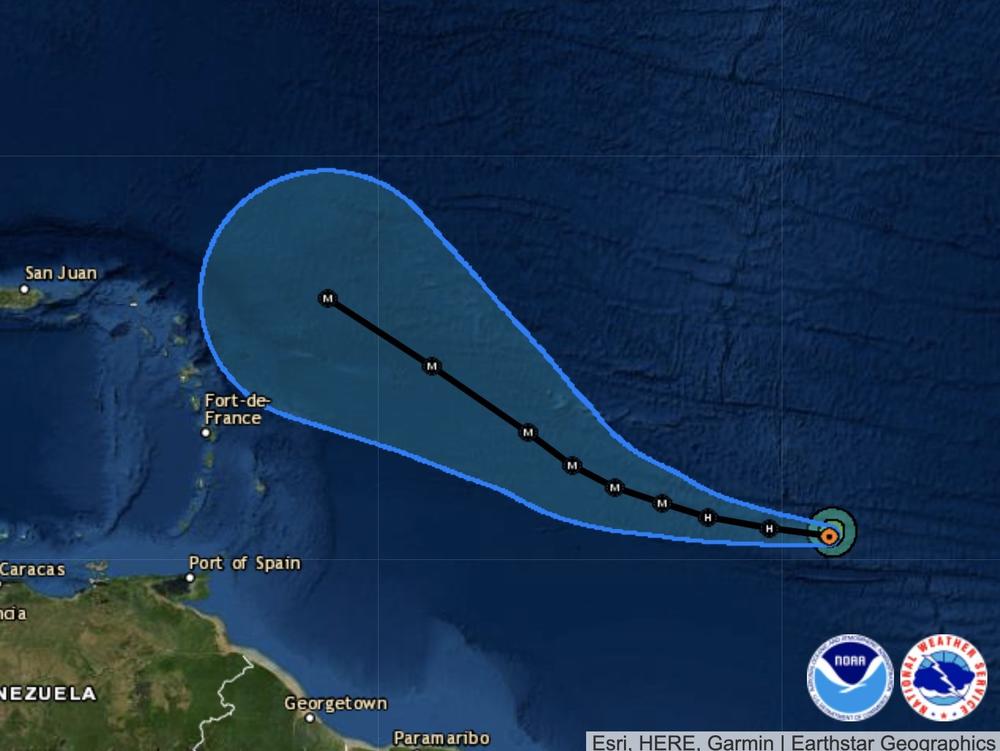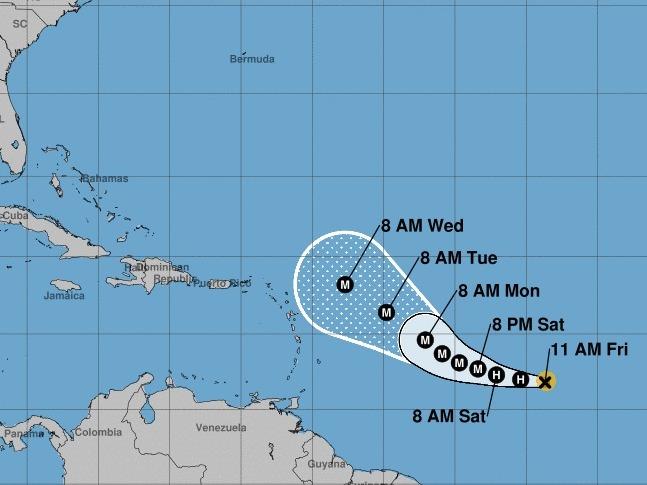Section Branding
Header Content
84-Degree Ocean Waters Will Turn Sam Into A Major Hurricane On Saturday
Primary Content
Hurricane Sam is poised to become a major hurricane Saturday — just one day after it reached hurricane status. The storm will rapidly intensify as it passes over warm 84-degree water far out in the Atlantic Ocean, according to the National Hurricane Center. Wind conditions in the area are also favorable for storm growth.
No coastal watches or warnings are currently in effect for Sam, which is more than 1,300 miles east-southeast of the northern Leeward Islands that rim the Caribbean Sea.
Forecasters are keeping a close eye on the storm, which is currently moving west at 14 mph. It's too soon to predict where or when Sam might affect land.
The National Hurricane Center is also tracking a low-pressure system north of Bermuda that now has a 70% chance of becoming a tropical storm over the next 48 hours. If it crosses that threshold, the resulting tropical storm would be named Teresa. The system is currently moving slowly to the north-northwest, the agency said.
Sam's winds are expected to strengthen to 130 mph
Sam's sustained winds were topping out at 75 mph for much of Friday. But those speeds are expected to reach 130 mph in the next 48 hours, narrowly making Sam a Category 4 hurricane as it plows across warm waters.
Rapid intensification is forecast to last for the next several days, the hurricane center said Friday in an update on the storm.
Once it reaches major hurricane status, Sam is expected to maintain much of its strength. The hurricane center's five-day forecast sees the storm maintaining 125-mph sustained winds into early next week.
While Sam is predicted to grow precipitously, satellite images from Friday showed the storm has a small, albeit well-developed inner core, extending hurricane-force winds only 15 miles from its center.
Seventh hurricane comes early in the Atlantic season
Sam is the seventh hurricane of the Atlantic season.
"The long-term (1991-2020) average date for the 7th Atlantic hurricane formation is 16 November," according to meteorologist Philip Klotzbach.
Scientists expect hurricanes to get more intense as a result of global warming.
"It's very simple physics: As the atmosphere warms, it can hold more moisture — and that means more fuel" for rainfall and storms, according to Tripti Bhattacharya, an assistant professor of earth and environmental sciences at Syracuse University.
Copyright 2021 NPR. To see more, visit https://www.npr.org.


